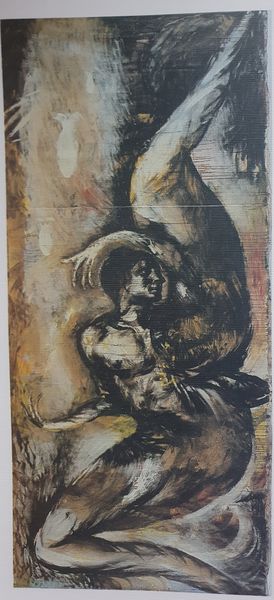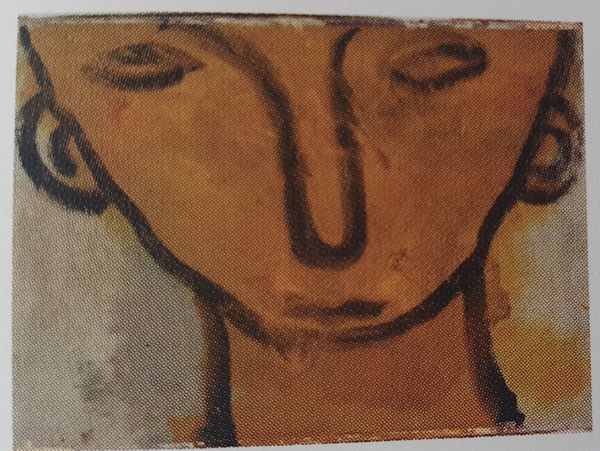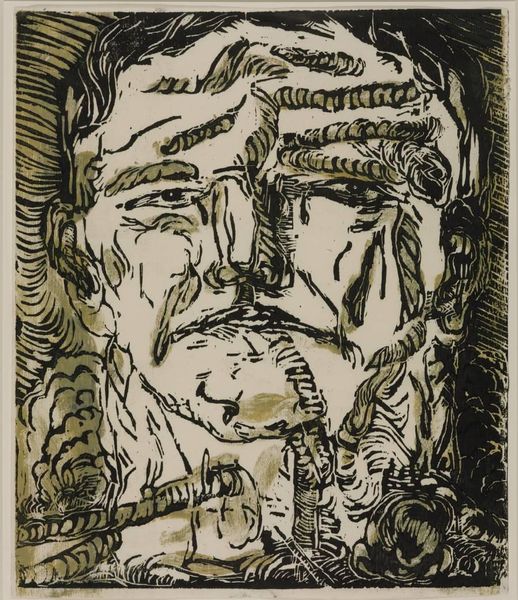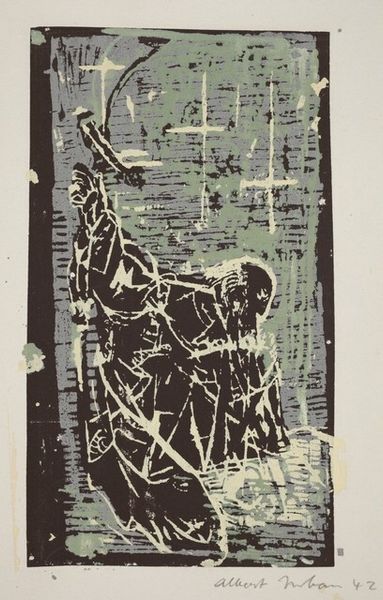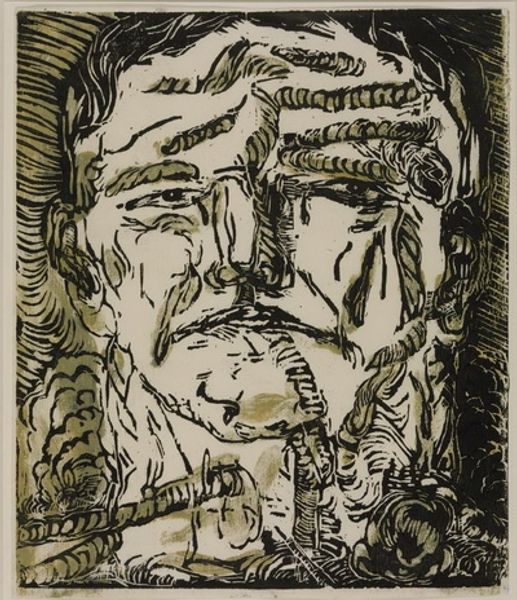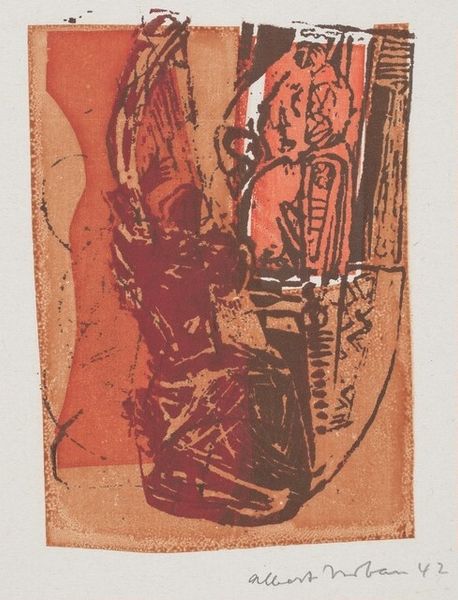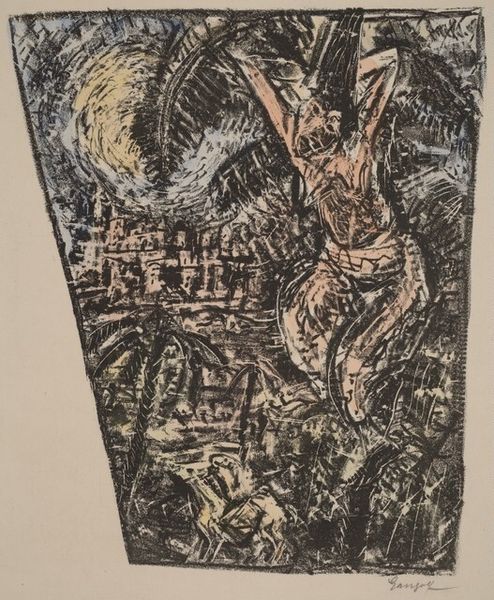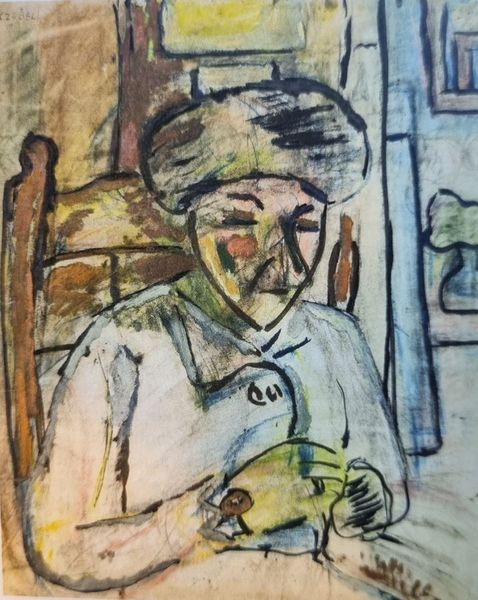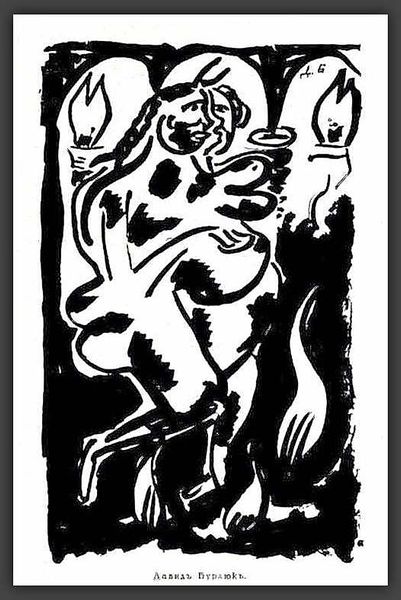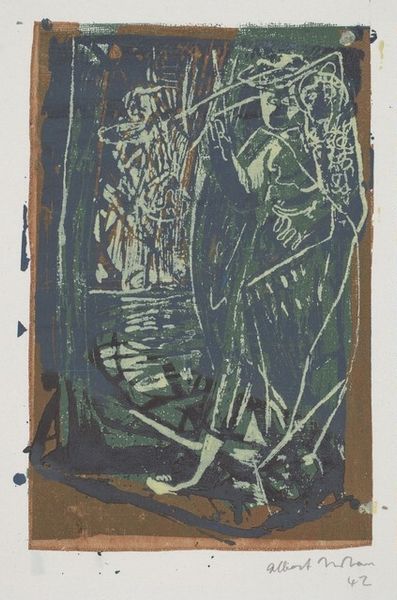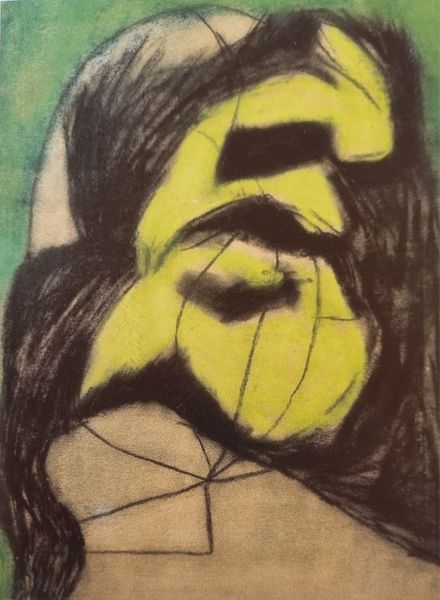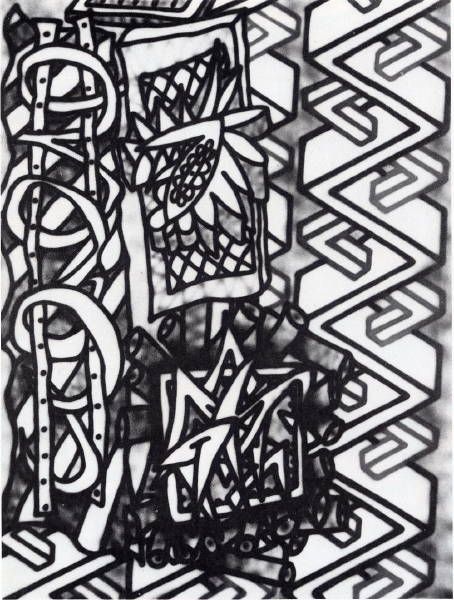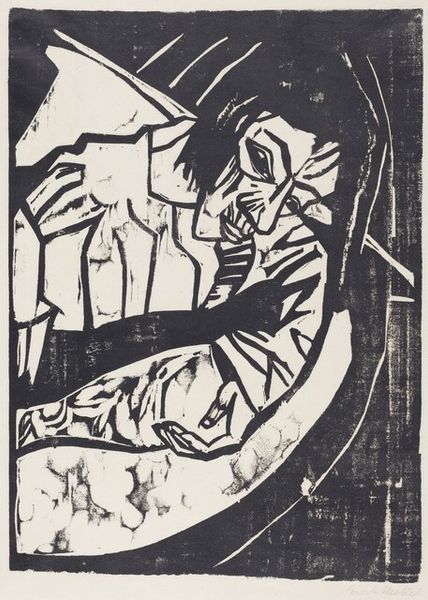
drawing, ink
#
portrait
#
drawing
#
ink painting
#
figuration
#
ink
#
naive art
#
abstraction
#
modernism
Copyright: Bela Czobel,Fair Use
Curator: The Bela Czóbel piece from 1926 immediately strikes me with its somber quality and fragmented structure. Editor: Indeed. And what appears to be an almost crude or naive style certainly is striking. Yet, I wonder what to make of these layers? We are clearly looking at a figure draped in white, perhaps a shroud or cloak, but with superimposed topographical notations on a bright yellow ground, it feels almost like a fever dream. Curator: Considering that Czóbel, though Hungarian, spent a good deal of time in Paris among the early Modernists and the Fauves, such experimental approaches make sense. Look at how the white figure interacts with the surrounding ground. How do you interpret its placement? Editor: Well, for one, it feels inherently spiritual, almost spectral, though I can’t say precisely what symbolic association that has for me at this point. Still, it may hint at an investigation of both physical space and cultural geography. Curator: Interesting that you call it "spiritual". Czóbel himself, particularly during this period, wrestled with portraying emotional intensity through radical approaches. What is it, visually, that gives you that sense of spiritual experience? Editor: Certainly, the heavy black ink adds an immediacy that pushes through whatever iconographic association is inherent in a white-draped figure; however, its effect seems purposefully obscure, which makes it particularly relevant for broader cultural readings on both representation and abstraction. This, for me, is very affecting and a deeply relevant engagement, no matter Czóbel's intention. Curator: And his artistic reputation really suffered after World War II, with some seeing him as politically regressive for his choice of representational figures during an era defined by abstraction. Perhaps the psychological tension speaks directly to how history later defined Czóbel’s oeuvre? Editor: Regardless, seeing it anew now gives me hope that we may re-engage these forgotten figures outside of prescribed ideological structures. Curator: That's a very important thing to keep in mind here—memory shifts, cultural values transform and in many cases there is the possibility of re-evaluation and the addition of relevant nuances that would've been omitted previously. Editor: Exactly—and this provides such an engaging moment of reconsideration through an inherently potent artistic engagement.
Comments
No comments
Be the first to comment and join the conversation on the ultimate creative platform.
